CTA stands for Computer Tomography Angiography. A CT angiography scan is a non-invasive and painless procedure that uses special X-rays to produce cross-sectional pictures of the moving heart, major blood vessels, and tissues inside the body. It is a medical test that combines a CT scan with a special dye called the contrast agent. A CT Angiography scan allows the doctor to identify and evaluate any blockages in the heart arteries.
Table of Contents
What is a CT scan?
A computer tomography (CT) scan combines a series of X-rays to produce cross-sectional pictures of the organs, bones, and tissues within the body. It is a more detailed version of an X-ray.
What is a contrast agent?

To help the doctor get a clearer picture during a CT scan, a special dye called a contrast agent/material is used. This helps in blocking the X-ray views so the doctor can get a better view of the blood vessels and tissues inside the body.
How does a CT Angiography scan machine work?
A CTA scan machine consists of the following components –
1) Computers(s)
2) Rotating X-ray machines
An X-ray beam is released that circles around the part of the body that is getting tested. This provides different images of the body part, taken from different angles. The computer then processes these images one on top of the other to create a cross-sectional, detailed 3-D image of the particular body part for further analysis.
This CT angiography scan is carried out with the help of a contrast material to get a clearer picture.
CT Angiography scan uses
A CT angiography scan is carried out to check for any abnormality in the blood vessels of the brain, lungs, heart, kidneys, or any other part of the body. It helps diagnose the cause of chest pain or other related symptoms. A CTA scan shows more detailed images of inside the head, neck, abdomen, and other parts of the body and can be used during surgery to look at the blood vessels which are being repaired.
The doctor may ask for a CTA scan to evaluate certain conditions, including –
● Heart disease
● Defects in the heart
● Blockage in the arteries
● Blood clots
● Tumors
● Disorganized blood vessels
● Enlarged or shrinking blood vessels
If you have any of the above health complications, get a CT Coronary Angiography scan done in Delhi, India with LabsAdvisor.com.
CT Angiography scan types
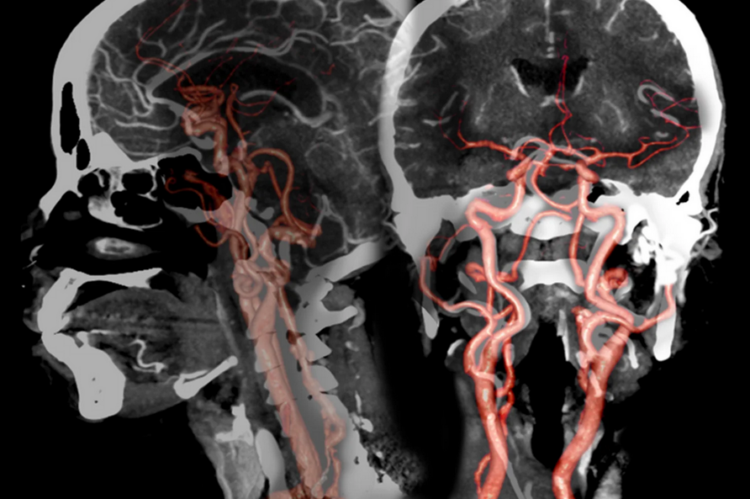
There are various types of CT angiography scans that a person can get. Some of these include:
1) CT Angiography; Heart
A CT angiography scan of the heart is used to view the heart and blood vessels. It is also known as a coronary CT angiogram if it helps in viewing the arteries that help pump blood into the heart. A CTA is a common test for people facing heart problems. It allows the doctor to explore the structures of the heart along with the adjacent arteries without making any incisions.
Your doctor may suggest a CT angiography scan of the heart if you are facing problems with –
● Congenital heart disease
● Blood clots near the heart
● Tumors in or on the heart
● Injury to the hearts valves
● Birth defects in the heart
● Blockage in the heart arteries
2) CT Angiography; Head/Brain
A CT angiography scan of the head/brain helps to take pictures of the blood flow in the blood vessels of the head. It can be used to look at the veins/vessels that are carrying blood to the brain.
Your doctor may suggest a CT angiography scan of the head/brain if you are facing problems with –
● Changes in thoughts and behavior
● Difficulty in speaking words
● Headaches
● Seizures
● Loss of vision or double vision
● Hearing loss
● Swallowing issues
● Fainting / Dizziness (vertigo)
● Weakness in parts of the body
3) CT Angiography; Head/Brain
A CT angiography scan of the neck is used to look at the blood flood through the neck and to take a closer look at the large arteries inside the neck that lead to the brain.
Your doctor may suggest a CT angiography scan of the neck if you are facing problems with –
● Abnormal blood vessels in the brain
● Inflammation of the blood vessels
● Planning a brain tumor surgery
● Damage to blood vessels (due to injury)
● Blood flow to the brain
4) CT Angiography; Legs and Arms
A CT angiography scan of the legs and arms may be required in case of any symptoms of a narrowed or blocked blood vessel in the arms, hands, legs, or feet of the body.
Your doctor may suggest a CT angiography scan of the legs or/and arms if you are facing problems with –
● Swelling of blood vessels around the legs/arms
● Bleeding
● Pain in the legs/arms during exercise
● Blockage in the blood vessels
CT Angiography scan preparation
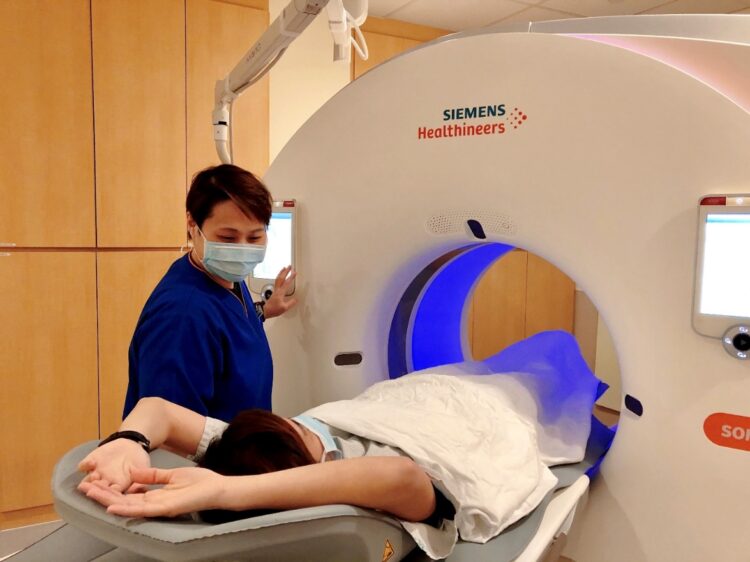
How can I prepare for a CT angiography scan?
Depending on the part of the body that one is getting tested for, the doctor may provide the patient with the following instructions –
● To eat a light meal, the night before the test is to take place.
● Fasting (to avoid eating for a certain amount of time)
On arrival at the hospital, the patient may be asked to remove some items of clothing and change into a hospital gown for the CT angiography scan.
All items containing metal must be removed before the CT angiography scan. Some of these items include –
● Jewelry
● Mobile phone
● Watches
● Keys
● Hearing aids
● Glasses
● Dentures (false teeth)
● Underwire (bras)
● Belts and buckles
● Any clothing item that may contain metallic threads
In case –
1) the patient is experiencing any stress or anxiety, sedatives can be used to help calm them during the scan.
2) the patient is pregnant, the doctor must be informed as the radiation from the CTA scan may be dangerous for the baby’s development. But if it is important, precautions must be taken before, during, and after the CTA scan.
3) The patient is undergoing a chest CTA, the patient is advised to not consume any caffeine 3-4 hours before the appointment. Exercise should be avoided as well.
Note: If you take any medications, talk to your doctor before fasting for the CT angiography scan test. You might have to take your normal dose at a different time or at the same time with less water.
CT Angiography scan with contrast material
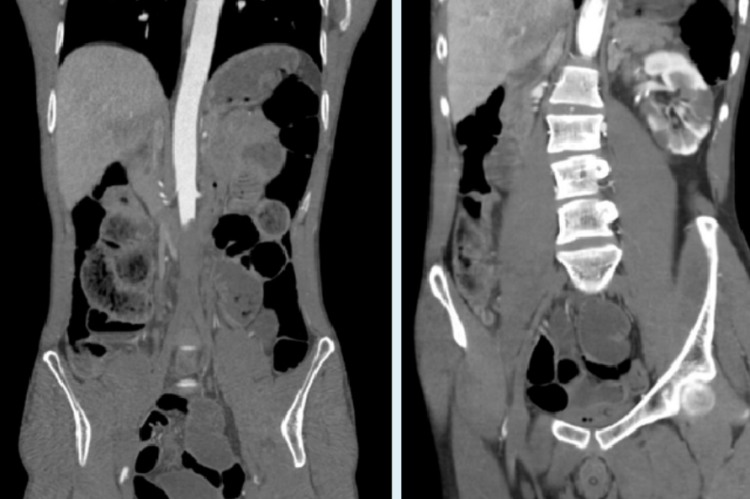
What is a contrast material?
During a CT angiography scan, thick components like bones are easily visible but not all soft tissues, blood vessels, and arteries show up in the first go. Therefore, a CT angiography scan combines a CT scan with a special dye called a contrast material. This is used to help block the X-ray views and appears as white color on the scan. This white color highlights blood vessels, arteries, organs, and other soft structures.
Is it dangerous to use a contrast material?
There is usually no reaction to the contrast dye that is used during the CTA scan. However, there are some side effects the patient might face. These include –
Mild side-effects such as:
● Upset stomach (loose motions, constipation)
● Nausea/Vomiting
● Stomach cramps
Serious side effects such as:
● Swelling up of the body
● Itching or skin rashes (due to allergies)
● Difficulty in taking breaths or swallowing
● Mental discomfort (confusion/ agitation)
How is the contrast material put inside the body?
There are a few ways that can be used to put the contrast material inside the patient’s body before the CTA scan. The following are the 3 ways the doctor may use –
1) Injection: The contrast material is directly injected into the body.
2) Orally: The contrast material is swallowed by taking it in liquid form.
3) Enema: The contrast material is inserted inside the rectum.
Note: After the CTA scan has taken place, the patient will be instructed to drink plenty of water or fluids to help flush out the contrast material from the body.
CT Angiography scan procedure
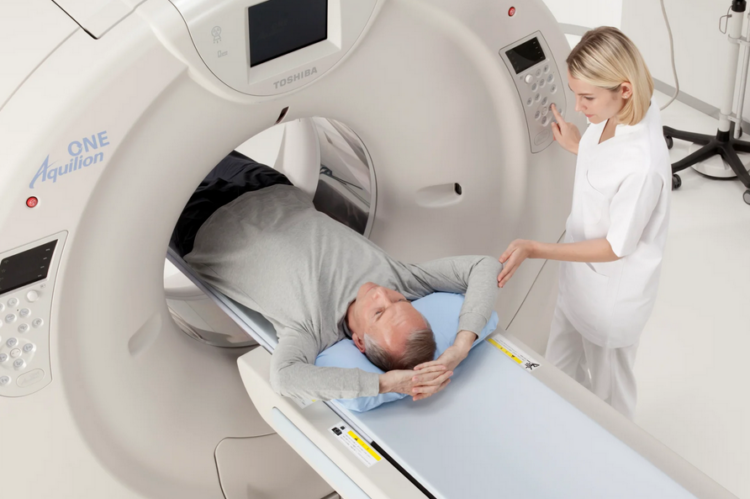
What is the procedure for a CT angiography scan?
On arrival at the hospital, the CTA scan procedure usually takes place in the following manner:
1) Depending on the body part that is being examined, the patient may be asked to change into a gown
2) The patient is then made to remove all metal items
3) A form is then filled out by the patient to take safety precautions in general and concerning the contrast material. The patient is free to discuss any issues/concerns with the doctor
4) Before entering the CTA scan room, the patient is injected with the contrast material and made to wait for a short period
5) The patient is then made to enter the CTA scan room where the doctor helps the patient onto the scanner table to lie down, comfortably
6) The scanner will then begin to rotate around the patient and the CTA scan will start
CT Angiography scan side effects
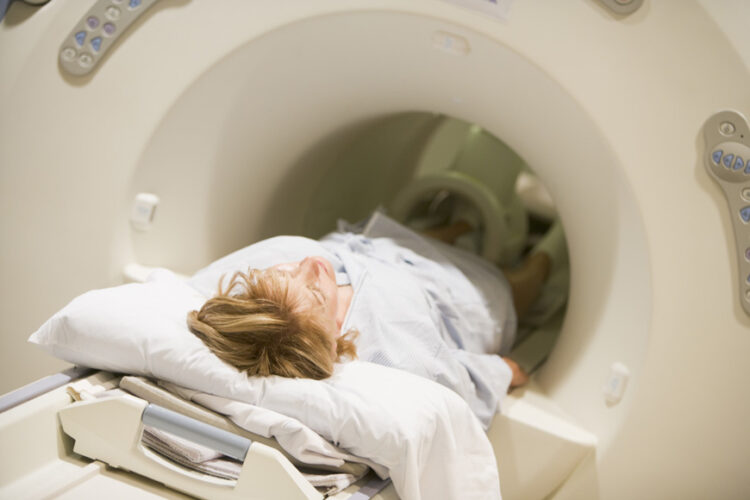
CT angiography scans are usually fast, safe and painless. It is nearly rare that a patient will experience any sort of side effect post a CTA scan.
However, there are a few cases that the patient should be made aware of –
1) The contrast dye used (before the CTA scan)
– In case of any allergic reaction to the dye – the doctor must be consulted. – A great amount of water or liquid(s) must be taken post the CT angiography scan to remove the material from the system.
2) Ionizing radiation exposure (during the CTA scan)
– CTA scans involve the use of radiations that are released from the X-ray machines. These can be harmful and damaging to the tissues and cells of our bodies.
How much time does a CT Angiography scan take?
A CT angiography scan is a painless and quick procedure that usually takes about 30 to 60 minutes but could take up to 2 hours. This depends on the part of the body that is being tested, the number of images being taken, and how much contrast material is used before the scan.
